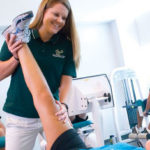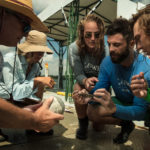UWF athletics at a crossroads
University of West Florida Intercollegiate Athletics is at a crossroads. In January, UWF President Judy Bense formed the Athletics Visioning Team to review the full range of UWF Athletic programs, in an effort to recommend the future direction of Intercollegiate Athletics at UWF. Reviewing a detailed analysis of university athletics and working with a national collegiate athletics consultant, NACDA Consulting, the Visioning Team is currently considering three scenarios for the long-term success of UWF Athletics - move to Division I without football, stay Division II and add football or stay a NCAA Division II school without football.
University of West Florida Intercollegiate Athletics is at a crossroads. In January, UWF President Judy Bense formed the Athletics Visioning Team to review the full range of UWF Athletic programs, in an effort to recommend the future direction of Intercollegiate Athletics at UWF. Reviewing a detailed analysis of university athletics and working with a national collegiate athletics consultant, NACDA Consulting, the Visioning Team is currently considering three scenarios for the long-term success of UWF Athletics – move to Division I without football, stay Division II and add football or stay a NCAA Division II school without football.
“We looked at these opportunities 10 years ago, and we felt it was time to reconsider the future path for athletics at the university,” said Dave Scott, UWF athletic director. “These are issues that come up continually on campus and in the community, and it’s important to build this vision for the future so we can develop a plan to get to where we want to be.”
According to the consultant’s feasibility report, moving to Division I would include $7.8 million in startup costs, a $1.8 million increase to the annual athletic budget and several facilities upgrades, including a proposed $30 million, 5,000-seat events center that would replace the 39-year-old UWF Field House. In addition, UWF would need to add a women’s sport to meet Division I’s 14 sport requirement. Furthermore, moving to Division I would not be a possibility until NCAA, the main governing body of collegiate athletics, lifts its membership moratorium in August 2011. Once this happens, it will be even more difficult for prospective Division I schools to meet the criteria, due to an increased application fee and the requirement that every school must already have Division I conference affiliation arranged.
A decision to add a Division II football program would require a $1.7 million increase to UWF’s annual athletics budget. Start-up costs, which would focus on practice fields and training center/athletic offices, are estimated at $9.8 to $10.6 million. An additional women’s sport would also have to be added if UWF adds the football program. The estimated costs to build a stadium on campus vary from $7.5 to $17.5 million. Initially, though, UWF could play at a nearby high school stadium; however the consultants warn that this would not be a long-term feasible solution. According to economic impact studies conducted by UWF’s Haas Center for Business and Economic Development, adding two sports would create an additional $1.2 million economic impact to the Pensacola community, due to the addition of 140 student-athletes on campus. Football visiting teams would bring approximately $150,000 per year to the Pensacola community.
A decision to stay Division II (DII) without football would enable UWF to strengthen the position of its current sports programs. Currently, UWF ranks 101 out of 279 DII schools with similar budgets and 29 out of 131 non-football playing DII schools with similar budgets. In order to become a perennial top-25 program without football, UWF would need to increase its operating budget by approximately $405,000, adding $125,000 to $160,000 in its sports operating budgets and approximately $100,000 in administrative salaries and staffing.
NACDA Consulting presented their final report to the Visioning Team last week. The group will meet to consider the options July 21. The group plans to make their recommendations to President Bense in August.
“This is an exciting time for the University and Intercollegiate Athletics,” said Scott. “Whatever the direction the university decides to move towards, it will be important that the students and the community are behind the vision and that all stakeholders are moving in the same direction to ensure a positive outcome.”
To learn more about the UWF Athletics Visioning Team, visit goargos.com or e-mail visioningteam@uwf.edu.
Written by Lauren Smith, University Marketing Communications


